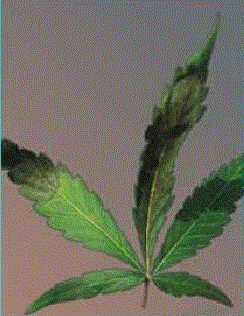Phosphorus summary
Phosphorus plays an important role in all living organisms and forms an essential element in plant and animal foodstuffs. It has a key position in cell metabolism and the plant’s total energy transfer. It is also a building block for the cell walls, DNA and all sorts of proteins and enzymes. The availability of phosphate is essential for young plants since approximately three-quarters of the total amount of phosphorus absorbed by the plant occurs before it is a quarter of the way through its life cycle! The biggest concentrations of phosphorus are also found in the self-developing plant parts such as the roots, side shoots and vascular tissue.
Phosphorus is a non-metal, chemical element which, because of its nature, is not found in its pure form because it is extremely reactive. It was discovered in 1669 by an alchemist who was condensing urine in an attempt to make gold. Phosphate compounds are rarely found in nature in the form that plants can utilise. Ground bones (bone meal) were previously used as fertilizer and they were later treated with sulphuric acid which made the phosphates a lot easier to absorb. In the second half of the 19th century, guano, a natural phosphate fertilizer, was dug up on a large scale and used in farming. These raw materials are currently obtained from rock phosphates which are phosphate rich ores. Some of the locations where this is mined include Morocco, Algeria and North and South America. In order to make rock phosphates suitable for use in agriculture and market gardening they are first acidified and purified. In alternative agriculture they are first finely ground or heated and are then available to the trade as expanded granules.
- In the beginning the plant has a dark green color but it’s a different dark green (blue-green) from that of a K deficiency.
- Growth in height and the development of side shoots are inhibited.
- After 2 to 3 weeks dark purple/black necrotic spots form on the older and middle-aged leaves causing them to deform.
- The purple/black necrosis later spreads out to the leaf stalks. The leaves turn, curl badly and die.
Developments in chronological order:
Symptoms
Certain phosphorus symptoms that are described in the literature should not be confused with a nitrogen deficiency. In cannabis, a phosphorus deficiency is not particularly characterised by striking purple colouration of the stems and leaf stalks, but by a small plant that has purple/black necrotic leaf parts that deform the leaf and cause it to curl up later.
Development:
- In the beginning the plant has a dark green color but it’s a different dark green (blue-green) from that of a K deficiency.
- Growth in height and the development of side shoots are inhibited.
- After 2 to 3 weeks dark purple/black necrotic spots form on the older and middle-aged leaves causing them to deform.
- The purple/black necrosis later spreads out to the leaf stalks. The leaves turn, curl badly and die.
Possible causes of Phosphorus deficiency:
Because phosphate is almost always found in very low concentrations in the environment the affinity of plant cells for phosphate is very considerable and it is absorbed by the entire root.
Deficiencies are therefore quite unusual except for:
- Conditions where the pH is too high (>pH7) in the growing medium. Under these circumstance the plants can barely absorb phosphorous at all and insoluble phosphorus compounds form in the soil.
- If the growing medium is rich in iron or zinc or if it is too acidic.
- Because of soil fixation.
What should you do?

Inorganic phosphates in ion form are absorbed very easily. As far as is known, plants do not absorb phosphorous in its organic form but inorganic phosphates can be released by the decomposition of organic soil particles. Because of the residual effect of phosphate it’s often the case that the older the ground the richer it will be in phosphate. Using fertilizer that contains phosphate, after it has been established that there is a deficiency, often has little effect. This is because hardly any phosphate enters the growing medium due to precipitation or absorption and any growth disorders that occur in the young plant hardly respond at all to repair at a later date. Because of this the phosphate fertilizer should be thoroughly mixed through the soil.
- Prevention is better than cure, use good soil and/or a good fertilizer. Go to your specialist trade shop for expert advice.
- If the pH is too high it is best to use a diluted solution of phosphoric acid to acidify the growing medium. Safe pH values for hydro: 5.2 – 6.2, clay soil: 6 – 7, potting compost and sandy soil: 5.5 – -6.5.
- Alternative fertilizers that contain phosphate include: guano, blood meal, bone meal, rock phosphates, Thomas slag and semi-liquid manure. The disadvantages of these is that their phosphate content varies greatly and absorption is often only moderate. How finely the rock phosphates are ground and acidifying them before use will improve their solubility. It is best to use products where the packaging guarantees certain percentages.
Warning: Excess phosphate damages the environment and can cause all sorts of side effects such as zinc, copper or magnesium deficiencies.